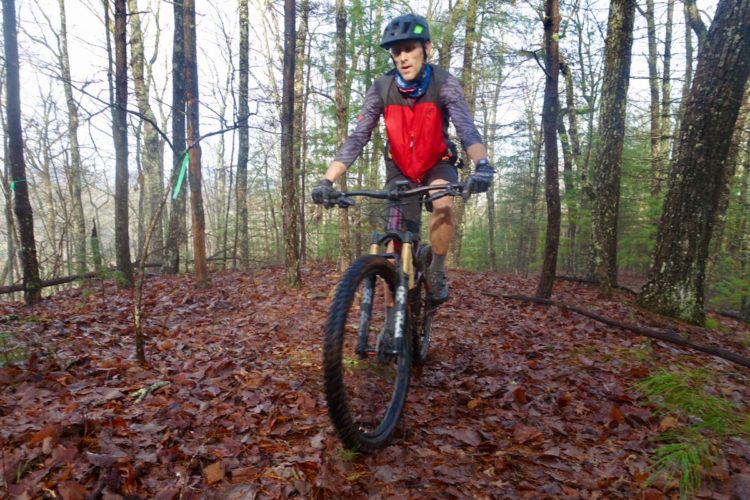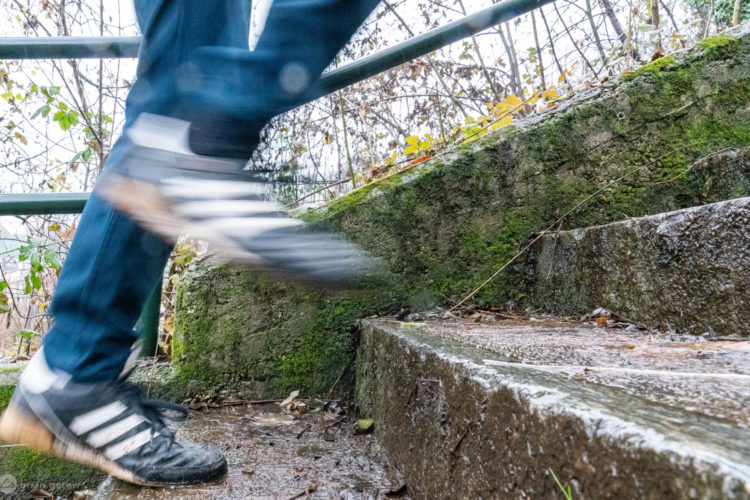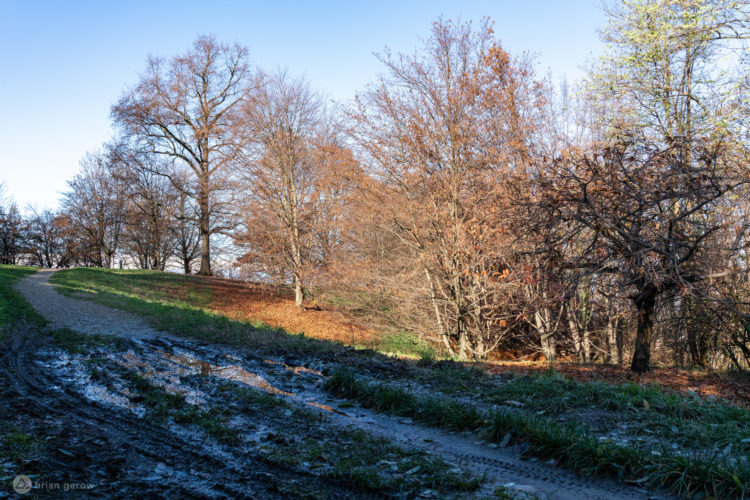It’s happened to everyone: you’ve been planning a ride for weeks, only for it to rain the day before the ride, closing the trails and crushing your plans. Or you’ve driven (or worse, flown!) to shred epic singletrack and upon your arrival, you find the trail is a mud hole.
There’s certainly an art to predicting trail conditions. Local riders learn over time which trails drain better than others. Amateur meteorologists study rainfall totals and ambient temperatures to predict when trails will be suitably dry. Many of us just go with our gut and figure, hey, it’s been a while since it rained–the trails must be dry by now!
Singletracks has been collecting trail condition assessments from mountain bikers all over the world for about a year now, and some interesting patterns are starting to arise. The following examples show trail condition changes over a roughly 1-year period for two trails where we received 60-160 status updates during the year (that’s about one update every 2-5 days).
At Fairview Park in Costa Mesa, CA, it looks like conditions are pretty good year round! In August of last year we switched to subjective trail condition reporting as opposed to a simple open/closed status, which is reflected in the green bars on the left side of the chart.
Things stayed pretty dry and dusty in August and September but by October, conditions transitioned to tacky and hardpack. There was even a short stretch where the trails were wet–which riders should try to avoid. And it looks like the leaves came down around November; by January they were gone.
I recently planned a trip to Alafia, so this one is pretty useful to me personally. I see the trails get wet fairly regularly, especially in the summer. From November through January things were frozen (does it really freeze in Florida? see below), but so far February is looking a little wet.
Anyway, based on this chart the ideal time to ride Alafia is probably in October when it seems the trails are in the best shape. Oh, and if I decide to ride in June (who does this in Florida?) I’ll bring some hand pruners, just in case.
Limitations
I’ve already mentioned the biggest limitation to the accuracy of Singletracks trail conditions reporting, update frequency, but there are other issues as well.
Reporters aren’t always reliable. In one data set we looked at for a trail in Florida, there were a couple reports of frozen trails in July and August (ha!). In fact, reliability is the reason we removed “open” and “closed” statuses; land managers weren’t comfortable with unofficial reports on official statuses.
Conditions are also open to interpretation. When does a trail go from being wet to tacky? It’s also possible a trail is wet and leaf covered at the same time… but the reporter has to pick the most applicable status.
Going forward
Not only is this data potentially useful for mountain bikers planning trips, but it can also be an indicator of problems with trails that don’t drain properly or are under-maintained. Singletracks continues to collect trail status updates via our mobile app and we want to hear from you: how would you like to see trail data collection improved and distributed?
























11 Comments
Feb 20, 2014
I think it would be great if you put the trail check-ins and the status updates somewhere other than the latest news section of your home page though. I really liked it when you could see the latest forum entries and that seems to be all but drowned out by the trail check-ins. It is great that people are out riding and I am really happy for them, but the place to check that out should be in a "Latest Trail Check-ins / Trail Status" section.
Others could chime in here, I just wanted to offer a suggestion. I really miss the ability to quickly see the latest forum posts on the home page.
Take care!
Feb 20, 2014
One note: you can load more items in the news feed by using the "load more" link at the bottom. This way you can quickly go through the feed to see if there is anything you missed.
Feb 21, 2014
I guess the other way to think about it is that if the trail isn't being ridden, i.e. there are no checkins, that the trail is not in good shape during this time. This would ultimately only work on trails that get regular checkins.
Feb 20, 2014
Another limitation I have found is that many, if not most, times I tried to change the status of a trail from one thing to another, the status would still show the original condition. I eventually got frustrated and stopped updating statuses, and instead wrote quick trail reviews to update. I think this glitch may have been fixed, because I just updated some trail statuses now and they seemed to change/work.
Using smartphones is ideal to update, but I've also noticed that great trails often have poor service, and unless you remember to update when you get back to your home/car, you may forget. This is also another barrier to accurate data. It may be a little big-brotherish, but if can link an app like Strava to Singletracks (and we did), maybe we can program a function (that you can toggle on/off) that tracks that you were at a certain trail, automatically give your "badges", and ask you what the trail conditions were. This could happen when you upload your Garmin data to the web as well, which would make it super-easy to update trail conditions.
Lastly, I think we should maybe tweak some of the trail conditions descriptions. What does "frozen" mean? Is it icy and un-ridable, or a fat-bikers paradise of packed powder and snow? "Leaf-covered": don't bother because you can't see the singletrack, or a majestic trail reminiscent of scenes from the Shire? Plus, "sandy" and "dusty" shouldn't be lumped together...I'll ride dusty trails any day, but sand stinks.
Sometimes, for example, if a trail is mostly dry and excellent, but a few sections are a wet, muddy, mess, I don't know what to pick to update it. I realize that we can't have a drop down list of 20 things, but does anyone have any suggestions of things they think would be more accurate trail nomenclature? Examples:
-mostly dry/packed
-packed snow
-icy/frozen
-loamy
Thoughts singletracks minions?
Feb 20, 2014
At one time we considered making the trail status an open field, similar to the old Facebook statuses (Porcupine Rim is _______). But then it would be tough to analyze the data since statuses would be inconsistent.
Feb 20, 2014
Well, we recently rolled out just such a feature :) Now, if your tracker page is linked to Strava, we send you an email after your ride is complete and ask you how the trail conditions were. This way, you can update the trail condition once you've gotten home, showered, and are drinking your post-ride beer. No more messing around with spotty cell service at the trailhead!
Also, good thoughts on the trail descriptions...
Feb 28, 2014
Feb 21, 2014
Feb 21, 2014
Feb 20, 2014
More info coming in the official announcement.
Feb 20, 2014
Question: My phone tanks quickly on rides using Strava/GPS, so I ONLY upload my Garmin gpx files to Strava.com after a ride. I joined the Strava Singletracks app, so how do I link the tracker to give me those reminders?